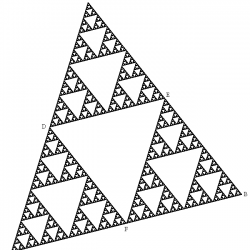 Arithmetic is the mathematical discipline that focuses on numbers and the operations that can be performed with them. This area of knowledge starts from the need to tell about the things that surround us. After the birth of writing, the first Sumerian and Egyptian numbering systems emerged.
Arithmetic is the mathematical discipline that focuses on numbers and the operations that can be performed with them. This area of knowledge starts from the need to tell about the things that surround us. After the birth of writing, the first Sumerian and Egyptian numbering systems emerged.
The first written numbers stopped being associated with things and began to have value by themselves. It was the Egyptians of the ancient world who 3000 years ago started the tradition of having numerical signs.
From a historical perspective, the Egyptian system is the foundation of the Greek and Roman modalities.
The Egyptian numbering system consisted of seven symbols
With a vertical bar the number 1 was expressed. A loop bent in the shape of an n for the number 10. A rope wound in a spiral corresponded to 100. A lotus flower for 1000. An index finger pointing upwards represented the 10,000. An animal with a tail for 100,000. Finally, an astronomer with outstretched arms symbolized a million (this symbol is believed to represent an astronomer who observes a large number of stars in the sky).
On the other hand, in each digit the symbols could be repeated up to a total of 9 times and the tenth time modified to the next higher symbol. With this numbering based on seven signs, only numbers that were less than ten million could be represented.
Although the numbering system was simple, the figures that were written down could take up a lot of space, since writing some numbers required a large number of symbols. Egyptian numbers were written both from right to left and backwards, since it was a non-positional additive system (we say that it is additive since to know the value of a number, the value of the symbols must be added and we say that it is not positional because the placement of the symbols does not affect the value of the number).
One of the peculiarities of the system is the absence of the number 0.
Each ancient civilization had its own numbering modality

The Greek numbering system was based on the letters of the alphabet. The Romans had an alphanumeric system, as they used letters to represent numbers (like the Egyptians, they had no symbol for the number zero). The Chinese invented the abacus system for counting and calculating and used a decimal type system.
The numbering of the Mayan culture was similar to the Egyptian, since ideograms were used. They used numbers to measure time in the Mayan calendar but not to perform conventional mathematical calculations. Their numbering system did have a sign for the number zero.
Photos: Fotolia - Paul Vinten / Zsolt Finna Boot









